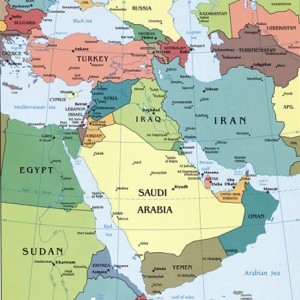Four US minesweepers arrived in the Gulf over the weekend to bolster the US Navy’s Fifth Fleet, secure the flow of oil shipping routes, and threaten Iran.
 The additional ships have an area of operations that includes the Persian Gulf, the Gulf of Oman, the Red Sea and parts of the Indian Ocean. In addition, the two other critical shipping choke points of the Suez Canal and the Strait of Bab al Mandab, between the southern tip of Yemen and Africa, are included in the mission.
The additional ships have an area of operations that includes the Persian Gulf, the Gulf of Oman, the Red Sea and parts of the Indian Ocean. In addition, the two other critical shipping choke points of the Suez Canal and the Strait of Bab al Mandab, between the southern tip of Yemen and Africa, are included in the mission.
In response, the commander of Iran’s ground forces, Ahmad-Reza Pourdastan, suggested on Monday that Iran might move to close the Strait of Hormuz to defend its interests. The threat is an old and tired one, and one that few expect to actually happen.
In April, the Obama administration sent a second aircraft carrier into the Persian Gulf, joining the rest of the fleet of American warships just south of Iranian shores. Cmdr. Amy Derrick-Frost of the Bahrain-based Fifth Fleet said the deployment was “routine and not specific to any threat.”
Indeed, flooding the Gulf with warships is certainly routine and targets no actual threat. They’re there to maintain economic and military hegemony and threaten Iran.
When Obama accelerated the deployment of warships to the Gulf in 2010, the New York Times described it as “part of a coordinated administration strategy to increase pressure on Iran” and also “intended to counter the impression that Iran is fast becoming the most powerful military force in the Middle East.”
Onboard the USS Abraham Lincoln in the Gulf’s Strait of Hormuz last February, BBC reporter Jonathan Beale explained, “This carrier and these [fighter] jets are more than just a show of force, they’re here to send a clear message to Iran as to who really controls these waters.”


